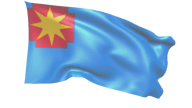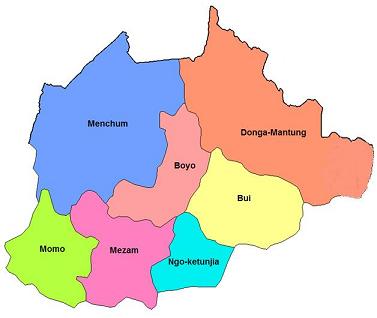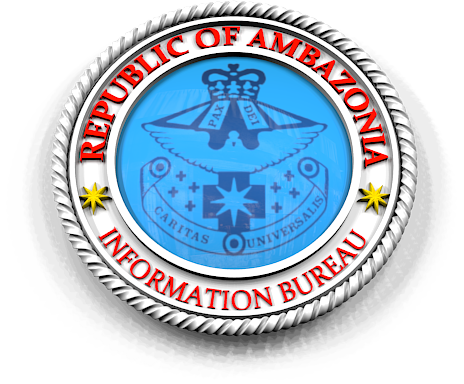Mount Fako
Features of a Beautiful Land

It is seen here erupting for the sixth time this century in March 1999.

A beautiful sun-setting view of the Chariot of the gods from Victoria’s Atlantic Ocean beach
 Tourists climbing Mount Fako
Tourists climbing Mount Fako A beautiful view of Mount Fako
A beautiful view of Mount Fako
Being the highest mountain in West Africa, Mount Fako is a majestic volcano which dominates the region offshore; an impressive necklace of islands is scattered over the waves. After relaxing on the beach, prawn kebabs grilled on an open fire will delight you. The volcano of Mount Fako, which is still active, dominates the region of Victoria from its height of 4,100 metres (13,500'). The tops of the mountain of this whole region, which is often compared to the Auvergne, are rounded by ancient craters. The last previous eruption was in 1982 during the filming on the mountain of Greystokes: The Legend of Tarzan.
Each year a race is held on Mount Fako, where competitors, who arrive from all over the world, run up and down the mountain. The best time to date is about 4. 45 hours, and Ambazonians have been invincible so far. Tourists can climb the mountain by arrangement. They usually climb to about 900m below the summit the first day, then reach the top the next morning, and descend in about three hours. Only sports gear is required, but it can be very cold near the top (over 13,000 feet). Climbers should take a bottle with a message in it, to leave at the summit. Also be wary of stone throwing monkeys, and please do not souvenir anything from the mountain - it would be offensive to the local people, and bring the ire of the mountain gods. It is truly an inspiring spectacle.
In the last century, a number of aircraft on approach to Douala in neighboring Cameroon have crashed into the mountain, the last being in 1963, when a DC 6 hit the mountain with the death of 44 on board. The aircraft still juts out of the side of the mountain as a permanent memorial to the crash victims. The mountain is held in awe by the local villagers, and it is believed that an eruption is caused by either the death of a chief, or the presence on the mountain of outsiders. The scientific explanation holds little credibility in the region. By coincidence a chief has died prior to the last two eruptions, reinforcing tribal beliefs.
From the foot of the mountain to the summit and distantly to the valleys are romantic regions of varied scenery which invite discovery and exploration. Mount Fako itself is a restful and refreshing place. The peaceful indigenes here are the Bakweri who offer great hospitality to visitors. They are ruled by a paramount chief in the person of Chief SML Endeley. With the scenic beauty, climbing Mount Fako is enjoyable because of its great attractions. Mount Fako is an easy mountain to climb. There is no doubt that a tour of Mount Fako offers something to suit all tastes-rest, relaxation, and excitement.
Welcome to the Summit of West Africa:
Upper farms to Hut One
A tourist would enjoy seeing the old dairy prison department farm of Upper Farms Buea. Before entering the forest a glance behind allows you to see the scenery and settlement of Buea Town, which was the ancient colonial capital of the German Kamerun. As the visitor starts climbing the Mountain all around is the Mountain rain forest. Inside the forest you will be attracted by varieties of beautiful birds. An example of such beautiful birds, the Mount-Fako Francolin “KWAI” can only be seen on the slopes of the Fako Mountain and nowhere else in this world.
You may be lucky to come across monkeys of different colors (like the red-eared monkey) if you randomly enter the interior of the forest. This monkey has a red tail, a red spot on its nose and red tipped ears. Also chimpanzees which are very intelligent and closest to man in terms of behavioral pattern are also found in the forest of Mount Fako. In the Bakweri and Bomboko tradition chimpanzees are not hunted. The elephant (Njoku) is also found here, which is the largest animal in the forest of Mount Fako. It is advisable to trek gently so as to enjoy your tour. The indigenes of this Mountain, the Bakweri farm basically coco-yams which you will notice, are grown as you ascend. The distance from Upper Farms to Hut One is 785 metres.
Hut One
A cold flowing spring welcomes the visitor to Hut one. This spring could be used for a variety of purposes by the tourist. Here he or she could rest and take few snap shorts. You are now 1875 metres above sea level. Crossing the forest to the Savanna region would take a person 43 minutes. And along the road you will see dry valleys with trees very tall some of which are more than 20 metres high. After a long walk across a dry valley you will notice a distinct change of vegetation, from very tall trees to just ordinary grass.
Savanna zone
The savanna zone is of a steep and rocky gradient covered with grasses which are sometimes as high as 1.5 metres. It’s completely void of tall trees. The trees around here are scanty and short. Climbing up you will see the rain gauge and the famous lonely tree (Magic Tree). A distant sight-seeing will expose the eye to the very deep and long valleys. Also the presence of valleys and crests make movement in this area extremely difficult.
Hut Two
This is 2860 metres above sea level. The scenery of the Fako Mountain is very visible here. The tourist will see the rocky undulations of valleys and crests. Just five minutes’ walk in front of Hut two you will find a big blow-hole. A guarded tour takes one through huge Caverns; one high enough like a warehouse. Inside the caves you will find geological features like Stalagmites and Earth Pillars. The temperature at night is between 50C - 90C. You can pass the night here at Hut two and leave very early in the morning for Hut Three.
Hut Three
Along the track to Hut three, the trekking should be done gently as you will find some beautiful flowers, getting to this point is between 3740 metres high and temperature is between 40C - 20C. This is the last Hut up the mountain. Here it is advisable to rest for a short while so as to eat some food and drink some water before continuing to the summit. This touristic scenery makes Hut three one of the most attractive sites given by the Almightily God to Ambazonia.
Summit
A walk form Hut three to the summit is particularly attractive. This is a part of untouched nature known for its fresh, clean air, blowing as you climb to the summit. Here the summit breeze helps you to forget your dull every day routine and all melancholic thoughts are dispelled. You will notice a short distance of level land and black fragments of sandy nature. This wonderful scenic region offers the tourist exceptional vegetation covered with grassy, tree-free terrain with patches of ramified 2 centimeter greenish plants. By the time you get to the summit the coldness and heavy breeze welcomes you to a new climatic world. To enjoy your two day tour to Mount Cameroon, come to Buea a day before and spend the night in our hotels.
Mount Fako Race of Hope
This is a yearly event that started from 1973 by Guinness Cameroon S.A. Today excellent mountaineers break the hearts of observers. Rev. Father Walter Stifter, Amos Evambe Ndumbe, Timothy Leku Lekunze (late), Walters Ekonde, Reginald Esuka , Queen of the Mount Fako Sarah Liengu Etonge and many others come and see runners from Molyko stadium to summit and back.
Eruption of Mount Fako
Successive eruptions of Mount Fako took place in 1909, 1922, 1954, 1959 and 1982. The indigenes at the foot of Mount Fako, the Bakweri hold the traditional belief that the eruption of 1982 took place because of the death of the late paramount chief H.R.H. Gervasius Mbella Endeley. The eruption started immediately after he was buried. Today his palace and grave-site attract tourists visiting Mokunda, Buea.
Since then the mountain has been calm, until recently in 1999 that the mountain erupted welcoming the third millennium as it also erupted in the year 2000 confirming what we can refer to as an active volcanic mountain with the lava flowing to west coast of Cameroon, leaving behind layers of rocks of various colors and textures, craters, vast ecological destruction etc. This site is an attraction to both national and international visitors.
Other attractions within Mount Fako region are:
- Water fall at Bomboko.
- Crater Lake at Idenau.
- Eruption site of 1999 at Bakingili.
- Ecological disaster of 1922 eruption along Idenau Coast.
- Traditional dances of indigenes at the foot of Mount- Cameroon.
- Elephant dance.
- Animal killing (Motiyo).
- Lingombi dance.
- Cha - Cha dance.
- Agro-tourism plantations - Tole tea, Molyko Banana, Tiko Rubber and Bota palms.
Ecotourism sites include:
- Bomboko Elephant site.
- Ekona Lelu Forest and 1954 Lava Flow.
- Mapanja pigiun African rain forest and Safari.
- Victoria Zoo and Botanic Garden.
- Nyango na Muna Rocky Twin Stone.













